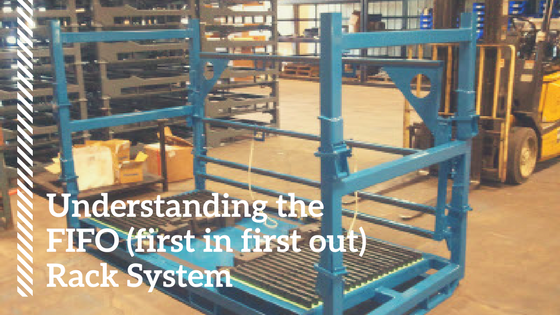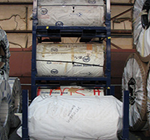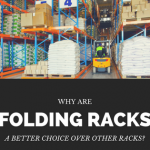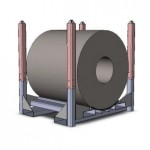Understanding the FIFO (first in first out) Rack System
First in First out (FIFO) rack management system allows the first placed inventory to be moved first. These flow racks are ideal for moving fresh and frozen food items, drugs, and medicines in sequential manner. Is that all? Read this post to know about beneficial features and types of FIFO systems.
Beneficial Features of FIFO Rack Systems
FIFO rack management system is an ideal inventory management system for any distribution or warehouse due to the following reasons:
- FIFO rack systems are ideal for warehouses that require frequent stock rotation or stock easily perishable goods, or possess a high turnover rate.
- FIFO storage applications are designed such that they safeguard any inventory from getting spoiled, and help reduce write-offs due to expirations or damages.
- The FIFO rack system helps optimize storage space due to the fast inventory movement. This helps in minimizing the total footprint.
Key Components of FIFO Rack Systems
Rack Structures:
Rack structures are the backbone of any FIFO racks system. These structures provide the essential support for storing goods in an organized and accessible manner. Depending on the specific needs of a warehouse or distribution center, there are various types of rack structures to choose from, including selective racks, push-back racks, drive-in racks and pallet flow racks.
Selective racks are designed for easy access to each pallet individually. They are ideal for environments with a wide range of products (high SKU environments) because they allow for quick and selective retrieval of specific items.
Rollers and Conveyors:
In pallet flow systems, rollers are often installed within the rack structure on inclined lanes. The force of gravity allows pallets to move forward automatically. As a result, the oldest stock (first in) is consistently at the front, ensuring it is the first out.
Conveyors can be integrated into the rack system, connecting different parts of the warehouse. They automate the movement of goods, ensuring efficient and accurate product flow. Conveyors are especially beneficial in high-throughput operations where rapid, FIFO-compliant order fulfillment is crucial.
Gravity Flow Systems:
Gravity flow systems are the heart of achieving FIFO in rack systems. These systems rely on the force of gravity to move products from the loading end to the picking end in a sequential manner. The primary components of gravity flow systems are inclined lanes or tracks. These lanes can be equipped with rollers, skatewheel conveyor beds, or similar mechanisms.
The magic of gravity flow systems is that they automatically advance products, so the items loaded first are the first to be picked. This is particularly advantageous in fast-paced operations where maintaining the sequence of products is critical, such as order picking for e-commerce fulfillment.
Picking and Loading Mechanisms:
Picking and loading mechanisms determine how products are safely and efficiently retrieved from the pallet racking system for distribution or production. The choice of mechanism depends on several factors, including the type of products, order volume and warehouse layout.
In manual operations, workers may use forklifts, hand trucks, or other equipment to pick items from the racks. They load the items onto these devices and transport them to their destination. This approach is suitable for businesses with lower order volumes or larger, heavier products.
Types of FIFO Rack Systems
The following are the major types of FIFO racking systems:
- Selective pallet racks: Selective pallet racks offer easy access to stored pallets, boxes or cartons without the need to displace another rack. These pallet racks require a large number of aisles, which helps in lowering storage density. The inventory racking systems are ideal for storing food, medicines, and other frequent ready-to-go items.
- Gravity flow systems: Gravity flow systems feature incline rollers or wheels on racks. This allows the product to slide from the back loading aisle to the front picking aisle. Here the pallets are loaded from the back of the system, which is slipped to the other end for picking. The next pallet slides into the picking position after the first pallet is unloaded. This inventory system features carton flow and pallet flow, which provides ample volume utilization. Gravity flow systems are ideal for storing materials having expiry dates including drugs, foods, and beverage. These systems can be configured as stand-alone systems or multi-rack modules. These flow systems are ideal for high volume piece-pick or case pick applications, too.
- Drive-through racks: Drive through rack features support rails, which are engineered to store boxes or pallets. These support rails are attached to uprights and can be easily accessed by forklifts. Typically, forklifts are raised to the level of support rails, and positioned on a selected storage locations. There are no picking aisles, which means these racks offer a high storage density. No wonder, drive-through racks are used to store bulk quantities of the same product having a longer lifespan, and items requiring an only one-time move.
Thus, various FIFO racking system help warehouse industries to organize their product effectively. If you are confused about the selection of the right FIFO system, you can always contact an industry expert, or a reliable manufacturer in your area.
Related Posts:
- 7 Important Warehouse Pallet Racking Tips to Maximize Productivity
- Why Do You Need The Pallet Shuttle System In Your Warehouse?
- How to Design your Warehouse Racking Layout for Optimization?
- An Essential Guide: Things to Consider Before Buying Pallet Racks













